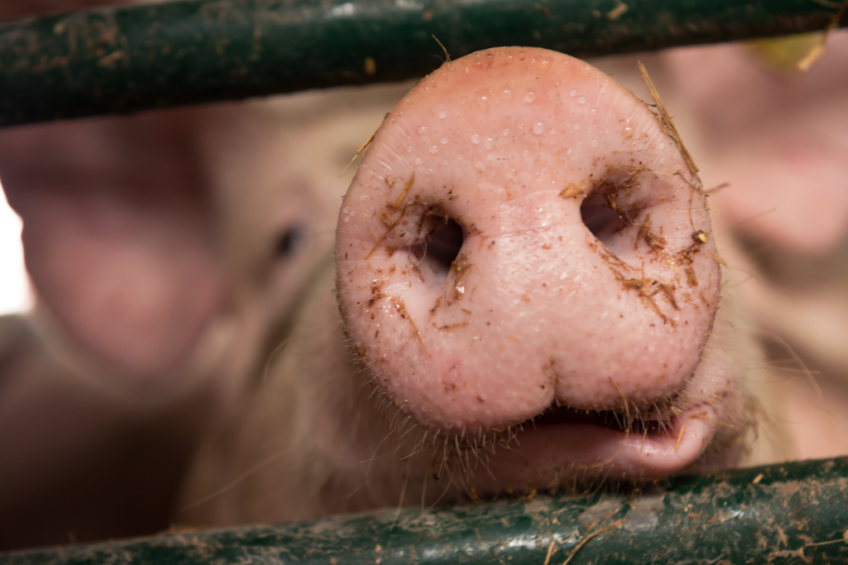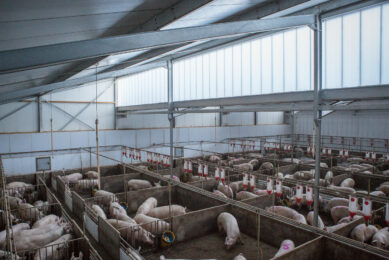How can we best handle non-ambulatory pigs?

Working at a pig farm means working with living creatures. It can happen that occasionally a pig does not grow too well, develops ailments or shows signs of disease. These animals might require a different approach. Now how to handle them properly? Health and welfare expert Dr Monique Pairis-Garcia has a few ideas.
Humane handling of pigs is an important pillar to safeguard animal welfare on farms across all stages of pig production. The swine industry has done an excellent job in developing training materials and resources to ensure pigs are handled humanely regardless of the pig’s size or number of pigs per barn.
Compromised or non-ambulatory pigs
Unfortunately, events occur in the barn when pigs become ill or injured and cannot be handled in the same manner as a healthy pig. These compromised pigs often become non-ambulatory (defined as unable to stand up without assistance) and are not permitted to be handled using the same tools or techniques that we would typically implement on the farm. Pigs become non-ambulatory for a variety of reasons, including diseases impacting the neurologic or musculoskeletal system.
Pigs may also become non-ambulatory as a result of injury or stress. Non-ambulatory pigs represent a significantly compromised population of pigs on-farm as they are often unable to access feed and water and are often bullied by other pigs in the pen.
In order to prevent further welfare compromise to non-ambulatory animals, special equipment should be used on-farm
Special equipment for removing pigs
Dragging any conscious animal by any part of their body is prohibited and considered a willful act of abuse. In order to prevent further welfare compromise to non-ambulatory animals, special equipment should be used on-farm and includes modified sleds or mats to gently roll pigs onto and move them through the pen or barn.
Recent work from Iowa State University evaluated 5 different types of handling tools for moving non-ambulatory pigs. These tools include a sked, deer sled, modified and revised deer sled and rubber mat. Results from this work suggest that the sked and deer sled were the most effective handling tools to move pigs. These tools were durable, could move across a variety of flooring and could be effectively used with only one person present. Price for each tool varied and ranged between $30-$327 per unit.
Treating pigs in a humane manner
Additional restraints are needed to ensure that the pig does not fall off the handling tool during movement, however, all handling tools evaluated restraints added to the tool can be purchased online with relative ease. Ensuring good welfare for pigs requires all pigs, regardless of condition, to be treated in a humane manner.
Non-ambulatory pigs must never be dragged by a body part and humane handling tools for non-ambulatory pigs are readily available and should be used in these situations.











